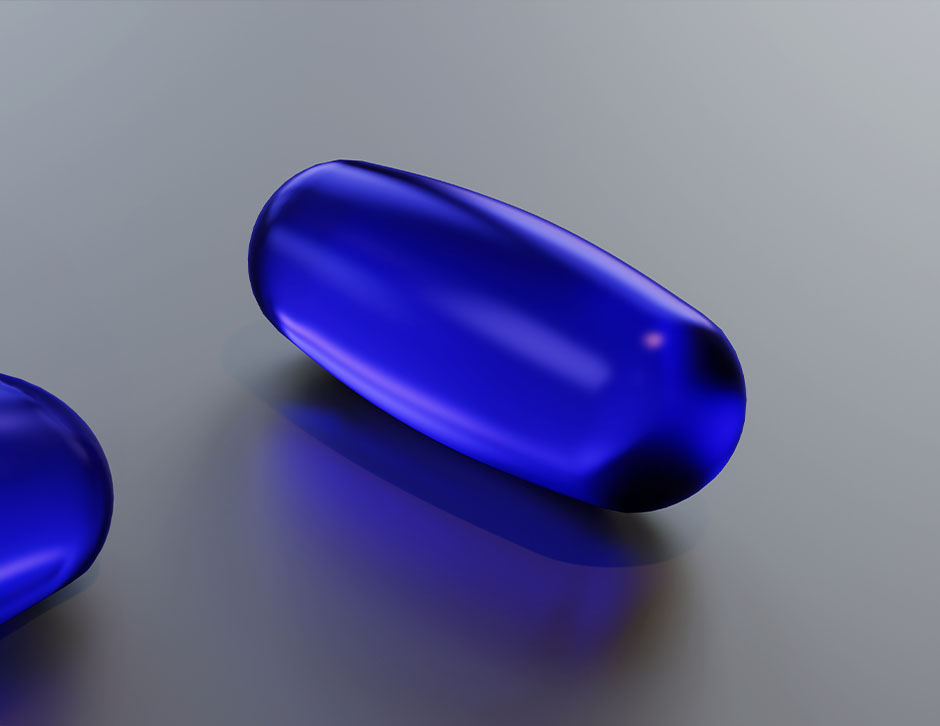
Here’s what we’ll cover in this blog post:
- The difference between low-dose and high-dose Methylene Blue
- Misconceptions about Methylene Blue dosage and risks
- The truth about nitric oxide (NO) depletion
- G6PD deficiency considerations when dosing MB
Methylene Blue (MB) has a unique dual identity. At low doses (under 30mg/day), it’s being studied as a brain-boosting supplement that may help with focus, energy, and protecting brain cells. At high doses (100mg–1000mg/day), it’s used in hospitals to treat serious conditions like malaria, septic shock, and cyanide poisoning. Despite its long history of use, myths about MB’s safety still cause a lot of confusion. Many of these fears come from mixing up the effects of high doses with those of much lower, wellness-focused ones.
The problem? Even though Methylene Blue has a long history of safe use, many people worry it lowers nitric oxide (NO), which could affect blood flow and heart health. But what most people don’t realize is that this effect depends on the dose, and it’s mainly seen at very high medical doses.
This is a key difference that changes how we should think about Methylene Blue’s safety. At low doses, the concerns about nitric oxide don’t really apply, which is why it’s important to understand the full picture before making judgments.
Understanding Methylene Blue Dosing: Low vs. High Doses
Methylene Blue exists in two distinct dosing worlds, each with different applications and safety considerations:
Low-Dose Methylene Blue (<30mg/day) functions primarily as a mitochondrial enhancer and neuroprotective agent. At this dosage, it improves how well your cells work, lowers stress on the body, and supports clear thinking without significant risk of side effects.
High-dose Methylene Blue (100mg–1000mg per day) is used as a strong medical treatment for serious conditions like malaria, septic shock, and methemoglobinemia. These doses are given in hospitals, usually through an IV.
It’s important to understand the difference between high and low doses because they affect the body in very different ways. Methylene Blue works through something called a hormetic effect—meaning small doses can be helpful, but very high doses can be harmful. The side effects seen with high doses don’t happen at the much lower doses used for things like brain health and wellness.
The Nitric Oxide Question
Perhaps one of the most common myths about Methylene Blue is its effect on nitric oxide (NO) pathways. Some people say MB is dangerous because it lowers nitric oxide, which could affect heart health and blood flow. However, this claim ignores the point that MB’s effects depend on the dose.
At high doses (above 250mg and often delivered through an IV), MB may inhibit nitric oxide synthase (NOS), the enzyme responsible for NO production. This effect is actually beneficial in conditions like septic shock, where excessive NO causes dangerous vasodilation and critically low blood pressure.
However, at low doses (below 30mg), research indicates MB does not significantly reduce nitric oxide levels. In fact, by enhancing mitochondrial efficiency and reducing oxidative stress, low-dose MB may actually enhance blood flow in the brain.
Beyond Nitric Oxide: Other Safety Misconceptions
The confusion around Methylene Blue extends beyond its nitric oxide interactions.
MAOI Activity and Serotonin Syndrome Risk
Methylene Blue has weak MAOI activity, which has led to warnings about serotonin syndrome. This is a real concern at high doses or when combined with certain medications like SSRIs, opioids, or other MAOIs. But at low supplement doses, this risk is very low and usually not something to worry about.
The risk of serotonin syndrome becomes clinically significant only at doses exceeding 250mg and when combined with contraindicated medications. For context, between 0.5-4mg/kg of Methylene Blue is considered low doses used for enhancing cognitive function and brain health.
The “Toxic at Any Dose” Myth
Some critics claim MB is inherently toxic regardless of dosage. This contradicts its role in medicine for the past 140 years and inclusion on the World Health Organization’s List of Essential Medicines.
Low-dose MB has demonstrated remarkable safety in many clinical studies. Several studies have examined MB’s cognitive enhancement effects in humans and found excellent tolerability at low doses.
Dosing Considerations for G6PD Deficiency
While many MB concerns are misconceptions, the interaction with G6PD deficiency deserves careful attention.
G6PD (glucose-6-phosphate dehydrogenase) deficiency is a genetic enzyme disorder affecting red blood cell stability. Individuals with this condition face increased risk of hemolysis (red blood cell breakdown) when exposed to certain oxidative stressors, including high-dose Methylene Blue.
Low-dose Methylene Blue is not likely to cause hemolysis (a type of red blood cell damage). However, people with G6PD deficiency should talk to their doctor before using it. If you’re not sure whether you have G6PD deficiency, a simple enzyme test can help you find out before starting MB.
The Cognitive Enhancement Potential
Beyond safety considerations, low-dose Methylene Blue shows promising cognitive benefits supported by research.
A neurological study demonstrated MB’s memory-enhancing effects and dose-dependent impact on brain oxygen consumption. At low doses, MB improved memory retention and increased cytochrome oxidase activity, enhancing neuronal metabolism.
The cognitive benefits appear to stem from MB’s ability to enhance mitochondrial function, improve cellular energy production, and reduce oxidative stress in neural tissues.
The Future of Methylene Blue Research
Methylene Blue illustrates a core principle in medicine and nutritional science: dosage determines effect. The same compound that saves lives in emergency rooms at high doses can support cognitive and mitochondrial health at low doses to help combat brain aging.
Many of the misconceptions about MB safety come from not recognizing the differences between these dosing ranges. Rather than labeling it as simply “dangerous” or “safe,” we need a more accurate understanding of how it works. Methylene Blue deserves neither unqualified fear nor blind enthusiasm, but respect for its dose-dependent nature and a balanced view of both its potential benefits and precautions.
Note: The above statements have not been evaluated by the Food and Drug Administration. This product is not intended to diagnose, treat, cure, or prevent any disease.
